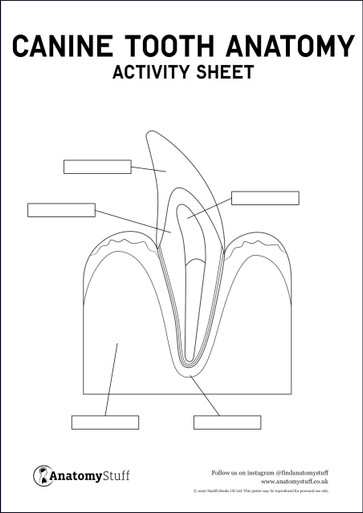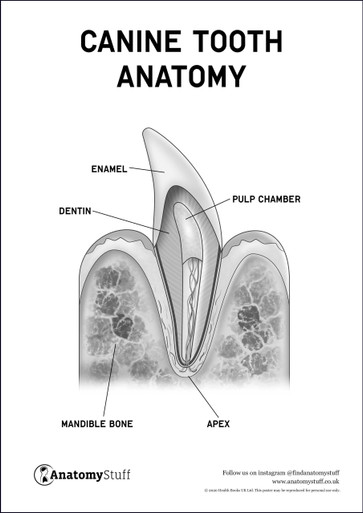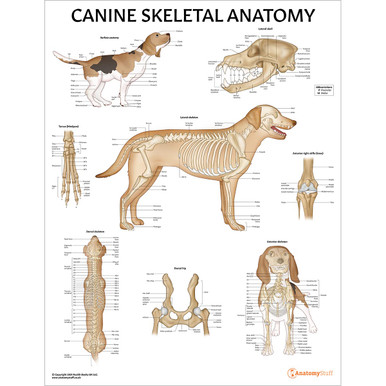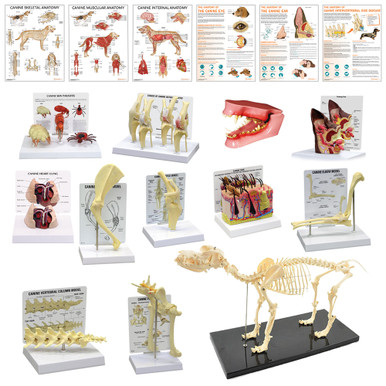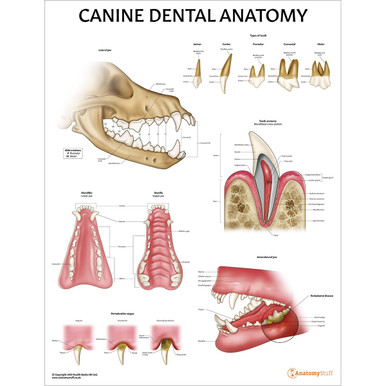Canine Teeth
Dogs are carnivorous animals with 42 adult teeth in comparison to humans who have 32 teeth. Puppies have 23 deciduous teeth, also known as milk, primary or puppy teeth. Canine teeth are sharp and meant for eating meat, although they can also eat plants with their molars. The maintenance of healthy teeth is key for our dogs to live happy, healthy lives.
Types of Teeth
Like humans, dogs have incisors, canines, premolars and molars. The fourth maxillary (upper jaw) premolar and first mandibular (lower jaw) molar are called carnassial teeth.
Incisors
Incisors are the small sharp, teeth found at the front of the jaw. Each of the twelve incisors has a singular root. They are used for tearing meat off the bone and for grooming.
Canine
Canines are the large, curved, sharp, fang-like teeth after which the canine family was named. They are also sometimes referred to as cuspids or eyeteeth (upper canines) and stomach teeth (lower canines). They are the longest teeth and have a singular root like the incisors. They are used for tearing, grasping and shredding meat.
Premolars and Molars
Premolars and molars are flat teeth with two to three roots. There are four upper and lower premolars, two upper molars and three lower molars. The purpose is for shearing, grinding and chewing food.
Carnassial
The carnassial teeth, also known as the sectorial teeth, are the last upper premolar (fourth premolar) and first lower molar. These are the largest teeth of the canine and have three roots. The main purpose of the carnassial teeth are for grinding and cutting food with their self-sharpening edges.
Dental Disease
It is crucial for pet owners to maintain their dog’s dental health. A common abnormality that occurs, particularly in small dogs, is the retention of deciduous (baby) teeth. This typically occurs with their canine teeth. If left untreated, it can cause an improper bite, weakened enamel and periodontal disease.
It is very important to brush your dog’s teeth and maintain their overall dental health to avoid dental disease including periodontal disease, one of the most common diseases of adult dogs and is the cause of early tooth loss in canines. Some signs of periodontal disease to look out for include, red and swollen gums, struggling with eating or chewing, facial swelling, rubbing the face on the floor or with paws, sneezing, nasal discharge, bad breath and visible plaque build-up.
Dogs tend to hide dental pain until it becomes more serious so regular care and check-ups are very important to keep our dogs healthy, happy and pain-free!
Free PDF Downloads
View AllRelated Products
View All








